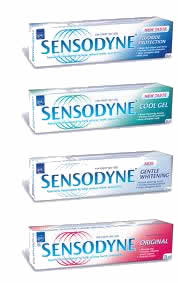QUALITY OF GLYCAEMIC CONTROL IN AMBULATORY DIABETICS AT THE OUT-PATIENT CLINIC OF KENYATTA NATIONAL HOSPITAL, NAIROBI
Abstract
ABSTRACT
Background: Treatment of diabetes mellitus is based on the evidence that lowering blood
glucose as close to normal range as possible is a primary strategy for reducing or preventing
complications or early mortality from diabetes. This suggests poorer glycaemic control
would be associated with excess of diabetes-related morbidity and mortality. This presumption
is suspected to reach high proportions in developing countries where endemic poverty abets
poor glycaemic control. There is no study published on Kenyan patients with diabetes
mellitus about their glycaemic control as an audit of diabetes care.
Objective: To determine the glycaemic control of ambulatory diabetic patients.
Design: Cross-sectional study on each clinic day of a randomly selected sample of both type
I and 2 diabetic patients.
Setting: Kenyatta National Hospital.
Methods: Over a period of six months, January 1998 to June 1998. During routine diabetes
care in the clinic, mid morning random blood sugar and glycated haemoglobin (HbAI c)were
obtained.
Results: A total of 305 diabetic patients were included, 52.8% were females and 47.2% were
males. 58.3% were on Oral Hypoglycaemic Agent (OHA) only, 22.3% on insulin only; 9.2%
on OHA and insulin and 4.6% on diet only. 39.5% had mean HbAlc £ 8% while 60.5% had
HbAlc ³ 8%. Patients on diet-only therapy had the best mean HbAlc=7.04% while patients
on OHA-only had the worst mean HbAlc=9.06%. This difference was significant (p=0.01).
The former group, likely, had better endogenous insulin production. The influence of age,
gender and duration of diabetes on the level of glycaemic control observed did not attain
statistically significant proportions.
Conclusion: The majority of ambulatory diabetic patients attending the out-patient diabetic
clinic had poor glycaemic control. The group with the poorest level of glycaemic control were
on OHA-only, while best control was observed amongst patients on diet-only, because of
possible fair endogenous insulin production. Poor glycaemic control was presumed to be due
to sub-optimal medication and deteriorating diabetes. There is need to empower patients
with knowledge and resources to enhance their individual participation in diabetes self-care.
Diabetes care providers and facilities also need capacity building to improve care of patients
with diabetes.
Background: Treatment of diabetes mellitus is based on the evidence that lowering blood
glucose as close to normal range as possible is a primary strategy for reducing or preventing
complications or early mortality from diabetes. This suggests poorer glycaemic control
would be associated with excess of diabetes-related morbidity and mortality. This presumption
is suspected to reach high proportions in developing countries where endemic poverty abets
poor glycaemic control. There is no study published on Kenyan patients with diabetes
mellitus about their glycaemic control as an audit of diabetes care.
Objective: To determine the glycaemic control of ambulatory diabetic patients.
Design: Cross-sectional study on each clinic day of a randomly selected sample of both type
I and 2 diabetic patients.
Setting: Kenyatta National Hospital.
Methods: Over a period of six months, January 1998 to June 1998. During routine diabetes
care in the clinic, mid morning random blood sugar and glycated haemoglobin (HbAI c)were
obtained.
Results: A total of 305 diabetic patients were included, 52.8% were females and 47.2% were
males. 58.3% were on Oral Hypoglycaemic Agent (OHA) only, 22.3% on insulin only; 9.2%
on OHA and insulin and 4.6% on diet only. 39.5% had mean HbAlc £ 8% while 60.5% had
HbAlc ³ 8%. Patients on diet-only therapy had the best mean HbAlc=7.04% while patients
on OHA-only had the worst mean HbAlc=9.06%. This difference was significant (p=0.01).
The former group, likely, had better endogenous insulin production. The influence of age,
gender and duration of diabetes on the level of glycaemic control observed did not attain
statistically significant proportions.
Conclusion: The majority of ambulatory diabetic patients attending the out-patient diabetic
clinic had poor glycaemic control. The group with the poorest level of glycaemic control were
on OHA-only, while best control was observed amongst patients on diet-only, because of
possible fair endogenous insulin production. Poor glycaemic control was presumed to be due
to sub-optimal medication and deteriorating diabetes. There is need to empower patients
with knowledge and resources to enhance their individual participation in diabetes self-care.
Diabetes care providers and facilities also need capacity building to improve care of patients
with diabetes.
Refbacks
- There are currently no refbacks.


